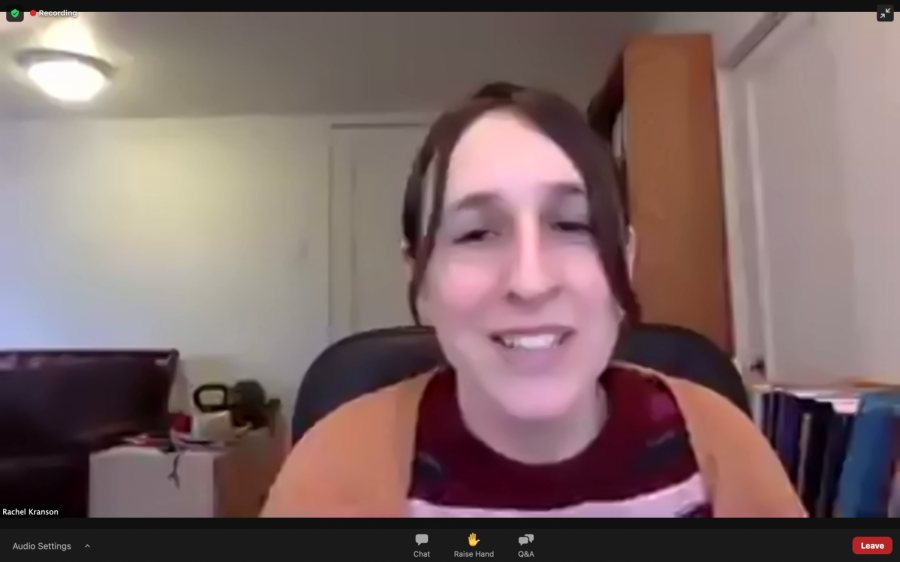In the ‘streets’ and ‘sheets’: Panel discusses the connection between sexuality and Judaism
Pitt’s Jewish Studies Program hosted the panel “Sexing American Jewish History” last Friday via Zoom to celebrate the release of the special edition of American Jewish History.
February 15, 2021
For Gillian Frank, it’s time for Jewish people to start thinking about how their religion relates to their personal sexuality.
“I sort of joked with us privately, but I will say that perhaps it’s time — in our investigations into the history of sexuality — to consider what it means to be Jewish both in the sheets and in the streets,” Frank, a postdoctoral fellow in the Department of American Studies at the University of Virginia, said.
Frank was one of the three featured speakers at the “Sexing American Jewish History” panel, which Pitt’s Jewish Studies program hosted last Friday via Zoom. The event commemorated the release of a special edition of the American Jewish History journal. This special edition — which the panelists co-edited — discusses how sexuality shaped the history of Judaism in the United States.
Kathy Peiss, an associate professor of American history at the University of Pennsylvania and moderator of the panel, said the editors came up with the idea for the issue almost three years ago, when they all attended a panel at the American Jewish Society conference.
“And now I’m even more pleased to be here to see how this panel has been instrumental in generating important new scholarly work,” Peiss said.
While Jewish people are often large contributors to movements based in sexuality, such as the gay rights movement and second wave feminism, Frank added that their “Jewishness” is overall “silenced.”
“Our claim is this — Jewishness has undoubtedly and deeply shaped our field of vision in the history of sexuality,” Frank said. “Even as the actors, institutions and movements that are central to our stories have been disproportionately Jewish. The task before us is to make that complex presence visible in non-essentialist and capacious ways.”
Jonathan Krasner, a panelist and associate professor of Jewish Education Research at Brandeis University, highlighted one of the articles in the issue, “Queer Healing, Gay Synagogues, Lesbian Feminists and the Origins of the Jewish Healing Movement,” written by Gregg Drinkwater. He said the article goes in-depth on how the LGBTQ+ community and the feminist movement played a large role in the Jewish healing movement.
“He’s looking here at the Jewish healing movement, and I think he’s trying to excavate the role that LGBT people and feminists played in building that movement, and how their concerns really played a role in the embodied Judaism that came out of that movement,” Krasner said. “I think that’s a really important contribution, and in general you can talk about how the queering of Judaism raises a lot of these questions.”
Another panelist, Rachel Kranson, an associate professor in Pitt’s religious studies department, talked about an essay in the issue she wrote herself. Kranson said she accomplished a goal she’s had for the past few years by publishing a collection of essays on the history of sexuality in Jewish American history.
“I didn’t know where [the article] was gonna appear when I first started writing it,” Kranson said. “It just struck me that there was not a whole lot of material for me to work with. There was considerably less material on sexuality in the field of American Jewish history than other fields I’m involved in.”
Kranson also said the scarcity of material caused some difficulty in putting this publication together. She said a lot of Jewish history related to sexuality is spread out in archives across the country. According to Kranson, examining this relationship would benefit the Jewish community.
“The field of American Jewish history, which so often addresses the question of how American Jews have integrated into American society and how they attempted to remain distinctly Jewish after the relative success of that integration, really stands to benefit from a careful examination of everything sexual,” Kranson said. “I’m particularly pleased that everyone involved in this special issue recognizes this.”
Overall, Kranson added that the editors of this issue hope to educate readers on sexuality, especially as it relates to Judaism and Jewish history in the United States.
“Our field simply hasn’t treated sexuality as something public, political or historical,” said Kranson. “And this is why I’m so terrifically excited about the launch of this special issue, which I believe and I hope will dismantle this binary once and for all.”








